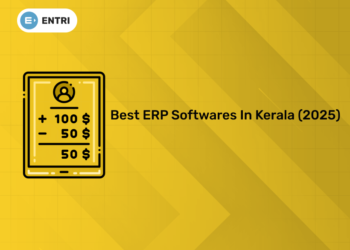Table of Contents
Construction is a business that generates a significant amount of waste. These waste materials include mechanical, Plumbing, and electrical systems. But today’s world is environmentally conscious. So, it is important to adopt sustainable building practices to push the environment-friendly guidelines adopted by your company. The first step to this is the minimizing of waste generation during the construction phase. In this article we will discuss methods that can be used to minimize the MEP waste generation, hence promoting sustainability and thus making the construction industry more eco-friendly.
The strategies that can be used for waste reduction in the construction industry mainly fall into three categories. They are as follows.
Design Focused on Optimization of Building Material
This includes reducing the number of materials that are in the fabric of the building and the waste produced during the construction. This also consists of the design for the deconstruction of materials and constituents when their useful life span ends.
Selection of Material
This includes the promotion of a circular economy by promoting the use of recycled materials and other components. This also includes specifying materials with recycled constituents.
Plans for On-site Waste Management
Make the construction plan in such a way that processes on-site of construction will carry on segregation materials and reuse or recycle if possible.
Approaches for MEP Waste Reduction in the Pre-design Phase
- Set the goals for waste reduction in your project.
- Decide on if design for deconstruction and principles of flexibility can be used.
- Survey the existing site to find whether the reuse of the old building components or adaptive reuse of the old building or its parts is possible.
- Analyse whether the space of occupation can be reduced through more efficient use of the assets.
- Can the designs be BIM so that the material information along with their life span analysis can be included?
Thinking of choosing a career in MEP! Get Entri MEP course demo classes!
Best approaches for MEP Waste Reduction
Let us look into the detailed methods that can be used as best approaches for MEP waste reduction.
Optimization of Materials
Accurate estimation and obtaining of MEP components can be done if techniques for material optimization are used. Determine the necessary quantities of materials needed very accurately and avoid excess ordering. In this way we can avoid excess inventory and hence unnecessary wastage. Another thing you can do is to find a supplier who is ready to take back their product at the end of their life span. And when it is possible for you, always buy a service in place of a product. For example, the company Philips provides lighting as a service instead of light fixtures. This gives the producer an incentive to provide us with long-lasting and easily maintainable products. This also puts the responsibility of removing the product at the end of its life on the service provider.
Selection of Sustainable Materials
When it comes to MEP installations, we should give more priority to sustainable materials that create lesser impact on the environment during the selection of materials. For this, we can use the following steps:
- Select products that contain recycled content
- Use materials that are from renewable resources
- Select materials have a lengthy life span, so waste generation is very minimal during the construction as well as during later maintenance.
- Let the offcuts and reclaimed products be used.
- Select finishing materials that may serve multiple purposes such as acoustic treatments and pin boards. Also, consider using structural materials that may not need the application of finishings.
- Try to keep the variety of finishing materials used to a minimum.
- Consider the reuse of reclaimed materials like lumber and bricks, especially if they are local.
- The excavation materials can be reused to balance the cut and fill in the site.
- Consider using reclaimed items such as furniture systems, raised floors, carpets, kitchens and doors.
- make sure easily damageable products are segregated and handled with caution.
It should be kept in mind that reclaimed materials might come with certain challenges such as the lack of guarantee in their performance or lifespan. So, one should be careful and examine these items closely before sourcing them. If they provide good performance and aesthetics then they should be used certainly
Learn the skills and get certified as an MEP draftsman! Click here!
Integration of Planning and Design
We have to include the principles of integrated design to reduce waste generation and optimize MEP systems. The whole design procedure should be streamlined by close collaboration between engineers, architects and contractors to align the MEP requirements and to minimize the redundancies. The designs should consider more efficient structural systems that use less material but give the same better performance. Using a steel frame in place of a moment frame is an example. Also, consider building a more efficient foundation system. Also, the design should allow replacements in the smallest levels. For example, choosing floating carpet tiles that adhere to tabs guarantees that broken tiles can be replaced individually.
Fixing components using reversible methods can increase the ease of separation during deconstruction. Components fixed using mechanical means are more sustainable than the composite ones and the ones that are glued. If they are fixed by mortar then they can be separated and replaced individually when damaged.
Modularization and Prefabrication
Utilise the modularisation and prefabrication methods for the MEP systems. The reason for this is that we can achieve many sustainability objectives when we construct components off-site and that too under controlled conditions. This includes reduction of waste materials (due to reduction in errors and reworks needed), precision enhancement and reduction of the on-site construction time. This also minimises the number of offcuts and lets the use of reuse and recycle.
We can minimise the cutting by coordinating dimensions between modular materials Like panels, tiles and finish areas
Skill Development and Training
The company has to invest in educating the staff working in the MEP sector. Providing them with MEP training programs to improve their skills and knowledge is an indirect way in which a firm can make their human resources more valuable. They should be taught the latest methods for reducing waste, proper ways for handling building materials and the importance of sustainability in the industry in the present time.
Efficiency in Waste Management
We have to put into action a very efficient and thorough waste management plan for the waste materials related to MEP systems. This includes:
- Proper segregation of waste
- Recycling the waste materials generated
- Disposal of the rest of the waste materials
- Reduce the waste created via packaging as much as possible
Build a career in the MEP sector! Click for demo classes!
Lean Construction Practices
To optimize resource utilisation and minimise waste generation, we can use the principles of the practice called Lean Construction. These principles significantly reduce the wastage of MEP in operations. The actions you can take according to this are as follows.
- just-in-time deliveries
- streamlined workflows
- continuous improvement
- ensure take back of surplus materials
Evaluation and Regular Monitoring
The company official responsible should continuously evaluate and monitor the MEP system throughout the process of construction. Doing this will help to find the possible issues, identify the inefficiencies if there are any and hence optimize the system performance. This will help to reduce wastage by a huge margin.
Are you an ITI or Engineering diploma student? Learn more about MEP Sector!
Learn and Earn in the MEP Sector
The MEP sector is always essential in this world. But where do we learn the skills essential to become an MEP draftsman? Where do we get appropriate certifications? This is the right place to answer all these questions. Entri app is providing the best of the MEP Draftsman Courses to equip you with the necessary skills. The course also comes with lessons from expert mentors, wonderful placement assistance and live projects in companies from the Middle East. Join the class today itself and open the paths to success in your new career.
Master MEP Design with Industry-Leading Training!
Gain in-depth knowledge of Mechanical, Electrical, and Plumbing (MEP) Design with expert-led courses. Learn HVAC, fire safety, sustainable building strategies, and BIM applications to excel in the construction industry.
Know MoreBest approaches for MEP Waste Reduction FAQs
- What are the three Best approaches for MEP Waste Reduction?
The three best approaches for MEP waste reduction are as follows.
- Appropriate design
- Selection of materials
- Planning the waste management
- Why is skill development and training important for MEP Waste Reduction?
Skill development and training are important for MEP Waste Reduction because the workers should be made aware of the need to go green and the innovative technologies that will help them to do so
- Why is Regular monitoring important for MEP Waste Reduction?
Regular monitoring is important for MEP Waste Reduction because this will help to identify the faults or any issues that prevent them from becoming too serious or causing too much loss of money or energy. Sometimes finding the problem in the initial stages will save you a lot of trouble. We can even save the material from getting damaged and hence prevent the need for them to be replaced if we find problems at the right time.
- What should be kept in mind while using the reclaimed materials for construction?
The factors that an engineer should keep in mind while using reclaimed material is that in most cases there is no guarantee of their performance or their life span. So, these materials should be carefully examined and made sure of their quality before being put into use.
- Why is using mechanical attachment methods instead of glues and composite material more beneficial?
The idea of using mechanical attachment methods instead of glues and composite material is more beneficial both for finances and time because this will make deconstruction easier and hence the replacement of damaged material individually possible. If a tile is damaged it can be replaced individually instead of repairing the whole floor which can be more time consuming as well as need more capital.










